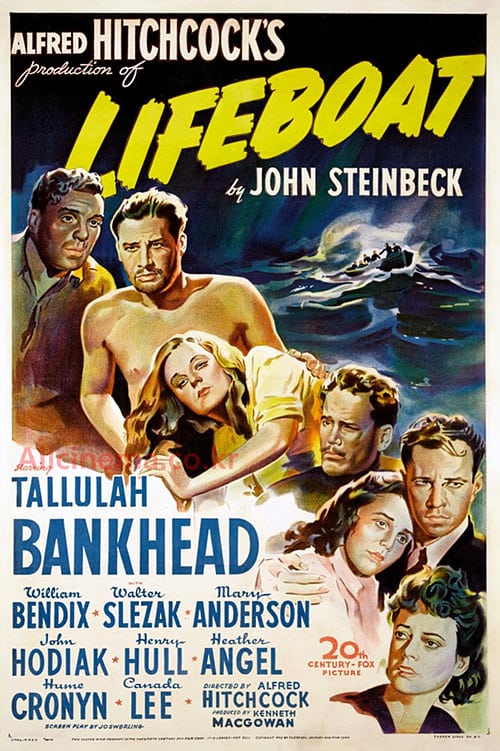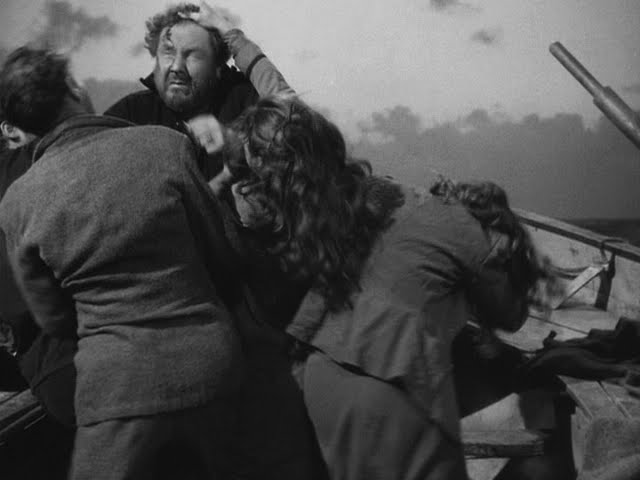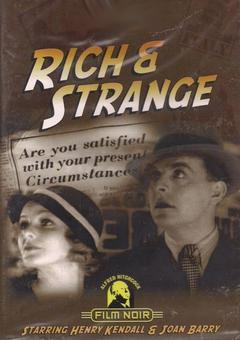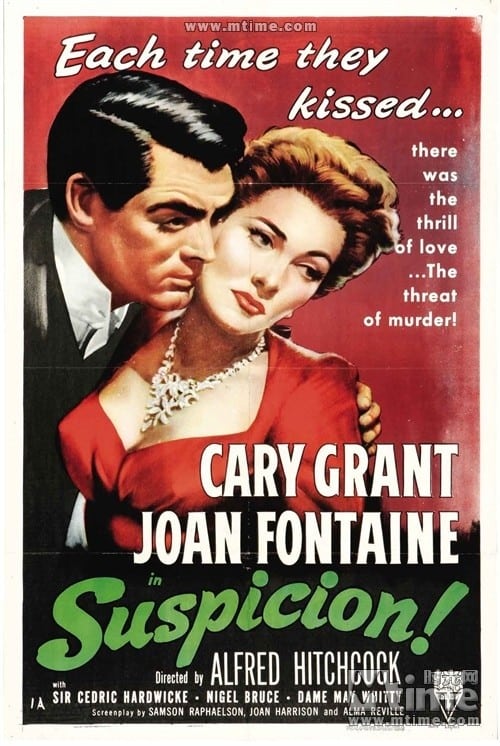Lifeboat (1944)
Directed by: Alfred Hitchcock
Written by: Alfred Hitchcock, Ben Hecht, Jo Swerling, John Steinbeck
Starring: John Hodiak, Tallulah Bankhead, Walter Slezak, William Bendix
USA
RUNNING TIME: 96 min
AVAILABLE ON DVD
THE HITCHCOCK CAMEO: In “before” and “after” pictures displayed in an advertisement For Reduco Obesity Slayer, a slimming ‘fat reduction’ product, on the back of a newspaper being read by Gus Smith on the lifeboat
REVIEWED BY: Dr Lenera, Official HCF Critic
Several British and US civilians, service members and merchant marines are stuck in a lifeboat in the North Atlantic after their ship and a U-boat sink each other in combat. A German survivor is pulled aboard and denies being an enemy officer. During an animated debate, crewman John Kovac demands the German be thrown out and allowed to drown. However, the others object, with radio operator Stanley Garrett, wealthy industrialist Charles Rittenhouse and columnist Connie Porter asserting the German’s prisoner of war status, and he is allowed to stay. An infant dies and the mother, despite being treated by nurse Alice MacKenzie, sneaks off the boat while the other passengers sleep, drowning herself in the night. The rest of the lifeboat’s inhabitants attempt to organise their rations and set a course for Bermuda….
Films set in a confined space featuring a small cast of characters can vary in quality, but despite the premise not sounding very cinematic and maybe belonging more on the stage, it can often result in a strong movie, and this is certainly the case with Lifeboat, which is even more of a change of pace from the film that Hitchcock made before it. In fact, it’s a very brave and experimental work for the time, and while it was obviously made as a World War 2 propaganda piece, its message actually seems to run a little deeper than, “Stop squabbling and deal with the real villains who are threatening America’s safety”, and therefore doesn’t really date the film very much despite its time of production and setting. Very absorbing and quite gripping despite consisting largely of arguments, it also has an odd dreamlike feel, something that can almost said to be enhanced by the variable back projection, though there are times said back projection’s poorness is hard to ignore. Of course, they couldn’t have made this film in the real ocean, and is the obviously CGI water you seem to constantly get in films these days any more convincing sometimes?
Hitchcock, loaned out by David O’ Selznick to 20th Century Fox, wanted to set himself the challenge of denying himself cinema’s usual mobility and scope but still make something that was purely cinematic. He considered setting a film entirely in a phone booth, something of course that Joel Schumacher realised over half a century later. After his happy collaboration with Thornton Wilder on Shadow Of A Doubt, Hitchcock wanted another well known writer to script his new film. Ernest Hemingway was asked but was busy, so John Steinbeck did it, and even wrote a novella, though his draft was worked on by Alma Reville, MacKinlay Kantor, Patricia Collinge, Albert Mannheimer, Marian Spitzer and Ben Hecht. The emphasis switched from John Kovak to Connie Porter, and the Nazi was made more obviously villainous. Originally intended to be in colour, Lifeboat was shot entirely in the studio except for some background footage. Hitchcock pre-planned the camera angles using a miniature lifeboat and figurines, after which four lifeboats were utilized during shooting: one for rehearsals, one for close-ups, one for long shots and one for water shots in the studio tank. During filming, several crew members noted that star Tallulah Bankhead was not wearing underwear. When told of this, Hitchcock observed, “I don’t know if this is a matter for the costume department, makeup, or hairdressing.” Most of the cast, plus cinematographer Authur Miller, who had to be replaced, fell ill during production, while Hume Cronyn suffered two cracked ribs and nearly drowned when he was caught under a water-activator making waves for a storm scene and had to be saved by a lifeguard. Lifeboat got three Oscar nominations though reception was mixed, some calling the film pro-Nazi, while Steinbeck, unhappy with script changes, asked for his name to be removed from the credits. The film failed to get a wide release.
Lifeboat opens effectively with the credits taking place over the sinking of the ship’s smoke stack and, just after that, a long dolly shot taking in debris from the sunk craft. Bronislau Kaper’s music is hugely dramatic, though it’s the only music in the film [when the head of the music department was told by Hitchcock he wanted no score as he was trying to convey realism and people would wonder where the music was coming from, he replied, “Tell me where the camera’s coming from and I’ll tell you where the music’s coming from”]. We gradually meet the people with whom we will spend the rest of the film. There’s glamorous journalist Connie Porter, millionaire factory owner Charles Rittenhouse, crewmen John Kovak and Gus Smith, radio operator Stanley Garrett, nurse Alice MacKenzie, black steward Joe Spencer, young mother cradling her dead baby Mrs Higgins, and last but not least, Willy [unnamed in the actual film], the German who may have captained the ship which sunk them. These characters are mostly stock, but are clearly intended as a kind of microcosm of society and the high standard of acting from every single one of the performers [helped by the film having been shot in sequence] ensures that they, for the duration of the film at least, feel at least partially real, while the script makes sure that they all have their good and bad sides.
There’s much chat, most of it debating about what to do with the German in their midst, but Lifeboat is certainly not boring. Rather, it has the feel of a genuine allegory, the characters drifting in a kind of limbo, and a strange but compulsive atmosphere enhanced by the large amount of close-ups, making the lifeboat sometimes seem huge. Hitchcock constantly seems to find new ways of filming character groups, while the varying quality of the back projection is partly atoned for by having the boat constantly bobbing up and down [I reckon I would feel sea-sick if I saw Lifeboat at the cinema] and the storm scenes are quite convincing. Mrs Higgins drowning herself off-screen is very sad and Gus having to have his foot removed due to gangrene is superbly acted by William Bendix, who does a great drunk act in the scene, and the actual operation powerfully hinted at by the shot and sound of Gus’s boot hitting the deck. There’s cliched but nicely handled budding romance, Connie gradually losing all her possessions, and the increasing realisation that the Nazi is not trying to steer them to safety at all. There’s theft, murder, violence, a rather spectacular blowing to bits of a German ship and a kind of a happy ending, albeit an ending that initially seems to be warning Americans against complacency but is maybe more complex than that and leaves more food for thought than 1944 audiences and critics were perhaps ready for, ensuring that the film still seems relevant to modern viewers.
Lifeboat was naively denounced at the time by some who objected to the Nazi being the cleverest one on the boat. They missed the point entirely, though certain scenes, in particular when the crew becomes a mob [notice how it’s the nurse, probably the most gentle person on the boat, who attacks first] and attacks the German, do seem more ambiguous. The film seems to be saying that our killer impulses, impulses that we all have, could very well be unleashed against our enemies but it may not entirely be a good thing. Deep down, Lifeboat seems to be pleading for tolerance in what will always be a world with huge differences; just look at how its script constantly shows us the point of view of one character before showing us a differing opinion that comes close to negating the first. The treatment of the black character Joe may seem simplistic and even condescending to modern eyes, but it was a leap forward for the time and to me seems intelligently ironic. The others ask his opinion last on what to initially do with Willi, he slyly asks,“Oh do I get to vote?,” and Charles replies,“Of course you do”, but we are clearly made to ask why Joe wasn’t included in the discussions from square one. Joe reveals that, unlike most of the other passengers, he has a wife and kids, but he only says this near the end because nobody bothers to get to know him before. Also notable is how Charles immediately makes himself captain without any vote and the dictatorial fool then proves pretty incompetent. The film seems to be saying how easily a dictator can assume power and how power can go wrong.
Except for Tallulah Bankhead [and even she was better known at the time as a stage star than a movie actress], Lifeboat doesn’t use big stars and doesn’t need them; the mostly character performers do a great job. While Bankhead, given her flamboyant character and persona, does her best to dominate, Walter Slezick’s cuddly but cunning Nazi is just as impressive. Even Heather Angel, in her small role as Mrs Higgins, has some great moments of distress and trauma. A shame Hume Cronyn’s British accent is so shoddy, especially when it starts off American. Though Hitchcock would later use a similarly restrictive setting in Rear Window to greater effect and the characters never entirely transcend being mouthpieces, Lifeboat is still a fine example of how to do the best with a simple premise and probably holds up better today than when it came out, where its intelligence and ambiguities can be more excepted. It was adapted for radio in 1950 and remade for TV, but set on a space craft, as Lifepod in 1982.
Rating: 

















Be the first to comment